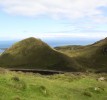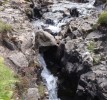Day 2
This second day is not a guided tour but suggestions of what I appreciated or found interesting when I walked through them.
The Jordaan
This district is perfect for walking around but also to find your lunch or dinner. You’ll find there many of restaurants and take-away, from (quite) all around the world but also shops. This district was, until these last decades, the area of the working class and, that you can still feel, that is a nice mix with the 17th century canals buildings. But the spirit of this district spreads wider that the map limits. In the Vinkenstraat and Harleemerdijk (more in the North-West) streets have the same spirit but more hype and hipster-chic turned. I have to say that if I enjoyed walk through the Jordaan but I really more enjoyed the Harleemdijk one with its Pho House (which does a really good Phò soup, excellent Banh Cuon and not bad Bo Bun!), Haarlemmerdijk 6, or this astonishing Spanish restaurant-grocery, Ibericus, Haarlemmerdijk 93, where you can select the smoked Spanish ham, you wish to eat. You can find also really nice shops, independent brands, strange haircut dressers and vintage shops.
Vondelpark
This is not a touristic area but that is a pity because here are the vibrant 19th century wealth part of the city (especially true around the Museum quarter) with all its Art Nouveau and Art Deco buildings, strange shapes, astonishing architectural statues. What saying of this huge park where you can find so many Amsterdamians, with their children, or doing their jogging,… A good way to cross this is to take the tram 3 (that, can be taken on Haarlemmerplein, at the end of the Haarlemdijk street), because first you can see through the windows this astonishing architecture and cross a long distant and secondly, you are seated.
The Old Centre
Even if you have fully booked all your stay planning, this part of the city is in the cross of so many ways that, at least to reach other parts of the city. One thing interesting is that if, yes, you can find many old facades, that is true mostly for the canals houses and this, for every canals, not only in the old centre.
The Red District
Of course, it is the place to go because, after all, the Red District is known for its windows. But, I have to say that I was a bit uncomfortable for many reasons but, one thing astonished me: if you go around the Oude Kerk (that, stricto sensus, not in the Red Light district), you have this impressive religious building and, all around, cafes, one chocolate seller (Puccini, excellent, see below) and… a lot of windows! This difference of worlds and spheres is really interesting and gave me reflection until now.
Interesting to see, in the North of the district, the “China town” that is, actually, a long street, the Zeedijk. But you can find here a Buddhist temple (between Stormsteeg and the Nieuwmarkt place).
The old Jewish Quarter
The area was deeply changed after the war and what you could see in guides about diamond sellers is not really…palpable. When I arrived on this large place with the Portuguese Synagogue, you see the new face of this district: an alive testimony of the former Jewish implantation and the modern city plane and architecture that was operated in there and… this impression to be in a suburb of a big American city. But this area is also the one of Museums: many of them are relative to the Jewish or Second WW history (the Joods Historisch Museum, Verzetsmuseum, De Hollandsche Schouwburg and the Wertheimpark memorial and the Jonas Daniel Meijerplein memorial) but also other subjects (as the Nederlands Scheepvaartmuseum, the Nemo, the Hermitage Amsterdam)














































































